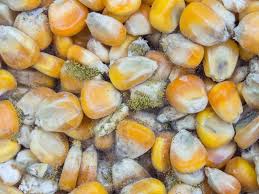
Scientists have recommended simple indigenous ways that ugali lovers can significantly reduce levels of aflatoxin in their maize meals using liquid extracted from banana peels or beans and maize stalks ash solutions.
This is cheaper and affordable as compared to aflasafe, a biological solution made from sterile sorghum and coated with four atoxigenic applied to maize plants at flowering stage to prevent aflatoxin causing fungi from accessing maize cobs. Aflasafe is sold at between Sh1,240 and Sh2,070 for every 10kg pack in certified agro-vets.
However, with ashes liquid which consumers can easily access, only 30 minutes are enough to make a solution and sieve it to apply it in githeri, uji (porridge), and ugali to protect them from aflatoxin’s harmful effects.
“The extracted liquid which is alkaline in nature has the ability to break down the deadly molecule in aflatoxin and reduce levels of the poison in maize meals,” said Jasper Kathenya Imungi, Professor of Food Technology, Department of Food Science, Nutrition and Technology at the University of Nairobi.
RELATED CONTENT: Applying aflasafe chemical two to three weeks ahead of maize flowering stops aflatoxin
Aflatoxin is a toxin produced by a fungus that grows on certain crops, such as maize and groundnuts. Consumption of high levels of aflatoxin can be fatal, and chronic exposure has been linked to liver cancer, suppressed immune response, and child stunting. Maize is a staple food in Kenya and is a major source of aflatoxin exposure in the country.
Imungi’s research on the effective of the extracted ash liquid in reducing aflatoxin levels is widely borrowed from a formula that was used and worked in Mexico and the test has been carried in several parts of the country and confirmed working.
He also says that other methods such as nixtamalization and mixing maize flour with flour from tubers such as cassava can also reduce aflatoxin effects.
“Nixtamalization typically refers to a process for the preparation of maize, or other grain, in which the grain is soaked and cooked in an alkaline solution, usually limewater, and hulled like in muthokoi,” said Imungi.
RELATED CONTENT: Fighting aflatoxins an orphan at a time
With maize being the staple food crop in Kenya, aflatoxin poses a major public health scare to most consumers of the diet. The infestation by the fungus has led to a significant amount of harvested grains going to waste leading to importation of maize in Kenya.
Last week, Kenya Bureau of Standards (KEBS) suspended seven peanut butter products which include Nuteez peanut butter, True nuts, Fressy, Supa meal, Sue’s Naturals, Zesta and Nutty over aflatoxin contamination.
In 2004 for instance 125 Kenyans died after consuming aflatoxin-infested food. In 2016, agricultural experts and the Kenya Bureau of Standards warned of presence of the deadly toxin in food such as maize flour and milk sold in supermarkets across the country.
Also, in 2014 the Kenya Agricultural and Livestock Research Organization (Karlo) launched the country’s first ever aflatoxin laboratory to tame aflatoxin poisoning.
RELATED CONTENT: Moisture meters tame aflatoxin poisoning in Uganda
The poisoning has become especially complicated because majority of small scale farmers who produce the contaminated maize consume the contaminated maize.
The lab was launched together with a Sh14.62 million facility to produce aflasafe, which can also suppress aflatoxin producing fungi in the soil.
It was projected that the plant will produce 15 tons of the aflasafe in a week, with the initial target being to produce sufficient amounts to treat about 100, 000 hectares.
















Comments powered by CComment